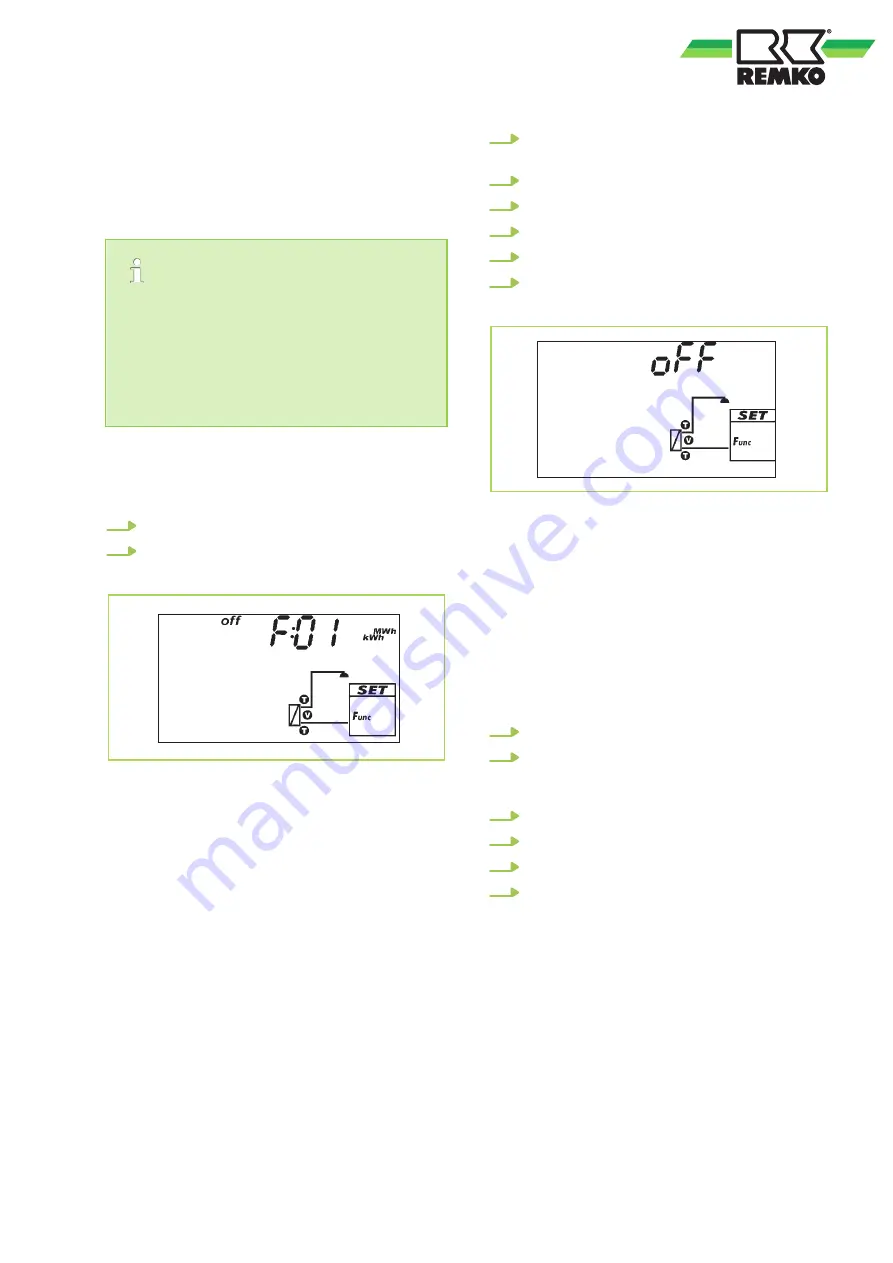
n
Function number, e.g. F:01 (Fig. 10)
n
Switching status:
- "on": Function is activated
- "off": Function is deactivated (Fig. 10)
If the function is not displayed or if neither on
nor off are displayed, the function cannot be
used.
Possible reasons:
–
The system set does not allow the function
–
All outputs are occupied
You can display the functions as follows:
√
Func
flashes.
1.
Press "SET". F:01 flashes.
2.
Press "
rs
" to display the next function.
Fig. 10: Display functions
Activate function
In order to be able to use a function, it must be
activated (activation = "on") and its key variables
must be fully set. If the function is activated and
exited before all required key variables are set,
"oFF" flashes for a short time (Fig. 11). The func-
tion is then displayed with the switching status
"oFF" (function is deactivated).
You can activate a function as follows:
√ Function number flashes.
1.
Press "SET". The function is selected and
flashes.
2.
Press "SET". "oFF" is displayed.
3.
Press "SET". "oFF" flashes.
4.
Press "
rs
". "on" flashes.
5.
Press "SET". The function is activated.
6.
Set the key variables as described below.
Fig. 11: Activate function
Set key variable
The functions have a different number of key varia-
bles. The value of a key variable is always set with
the same operating steps.
You can set the value of a key variable as fol-
lows:
√ The function was activated as described above.
1.
Press "
r
s
" to select the key variable.
2.
Press "SET". The value of the key variable
and the corresponding component flash in
the system diagram.
3.
Press "
r
s
" to change the value.
4.
Press "SET" to apply the change.
5.
Repeat steps 1 to 4 for further key variables.
6.
Press "ESC" when all key variables of the
function are set. The function number
flashes.
Key variables
The following describes important key variables of
the functions. The figures show examples.
17
Содержание EFS 25
Страница 35: ......






























